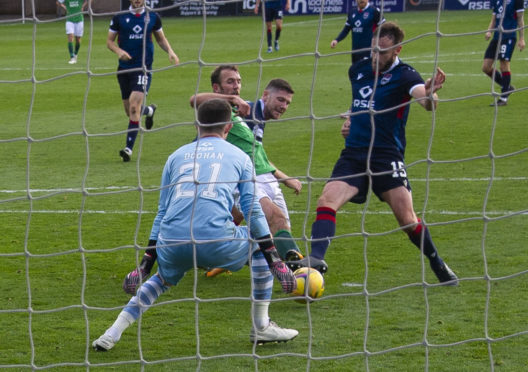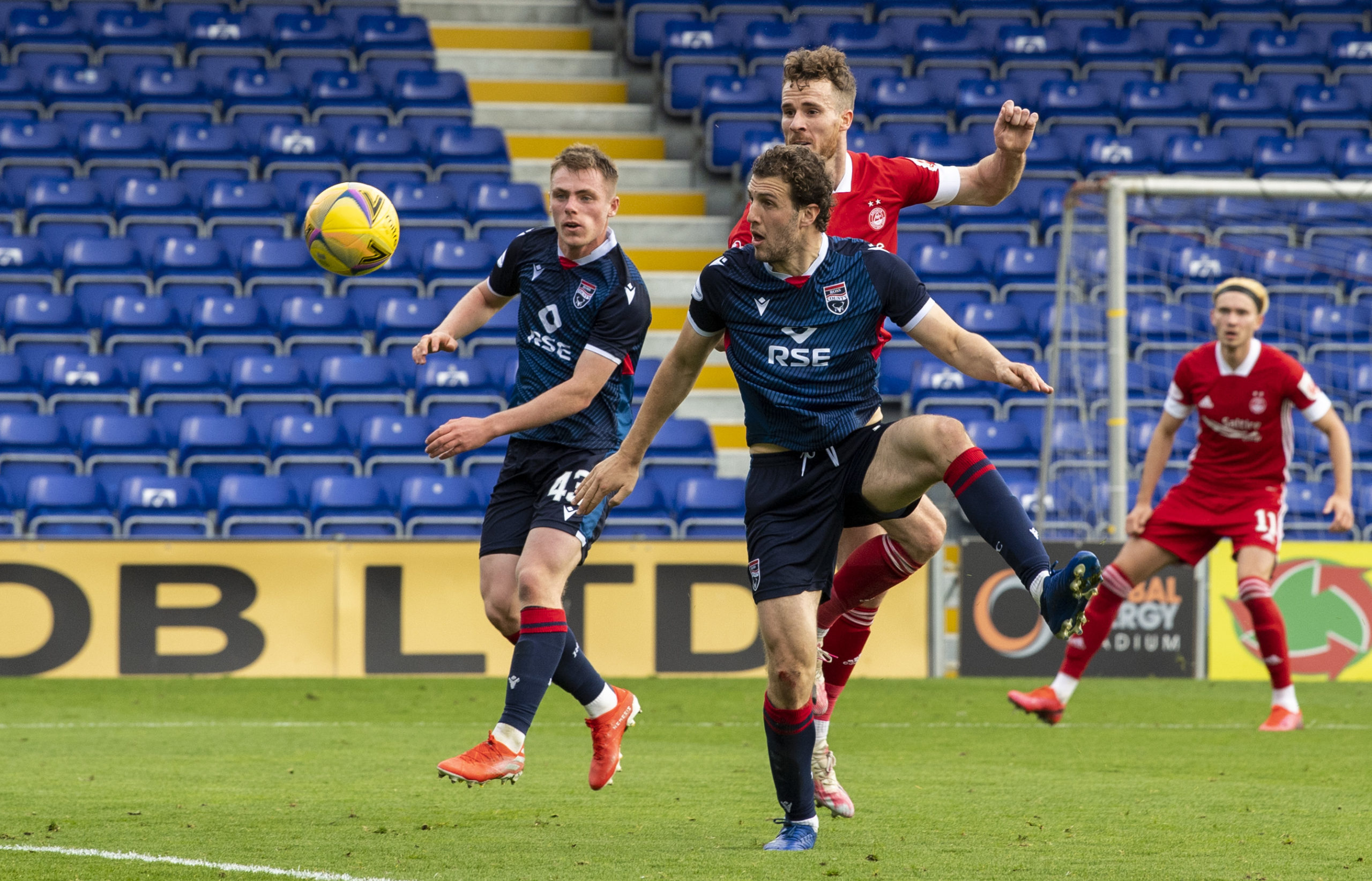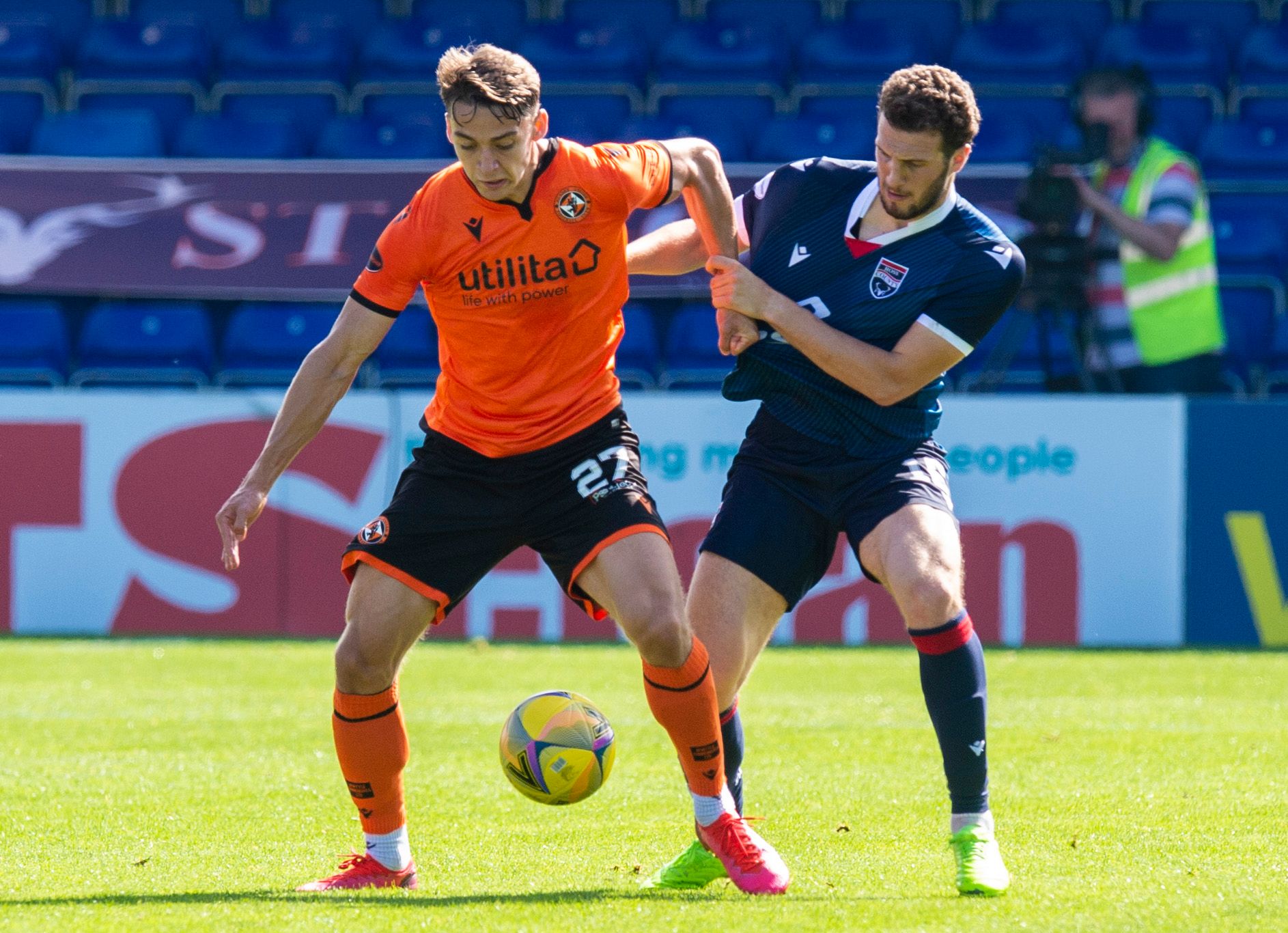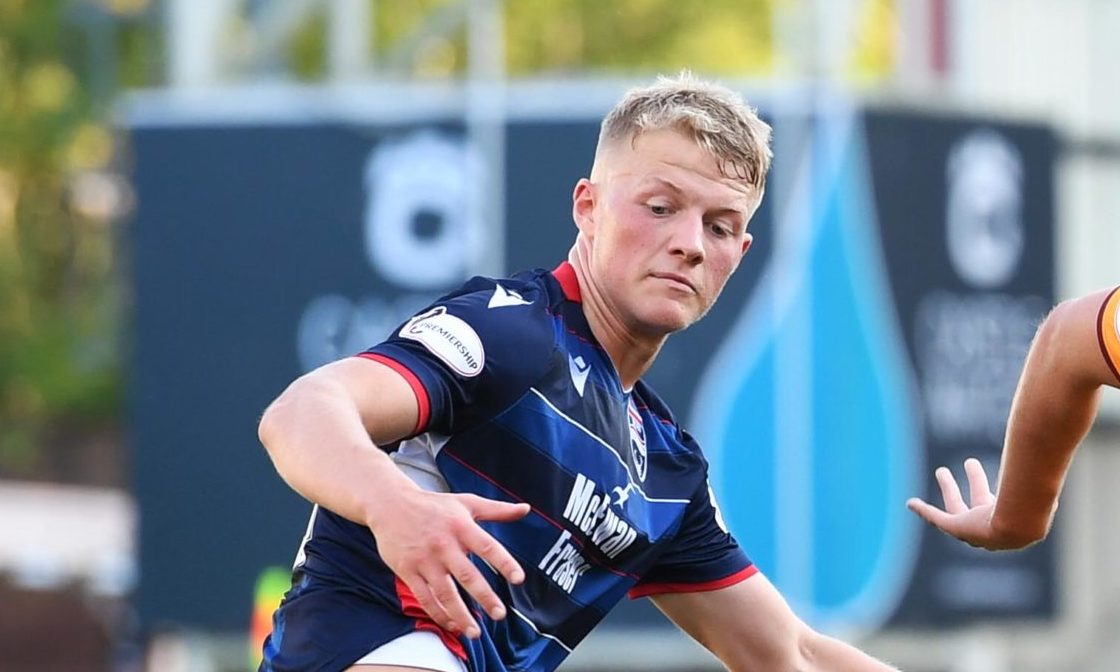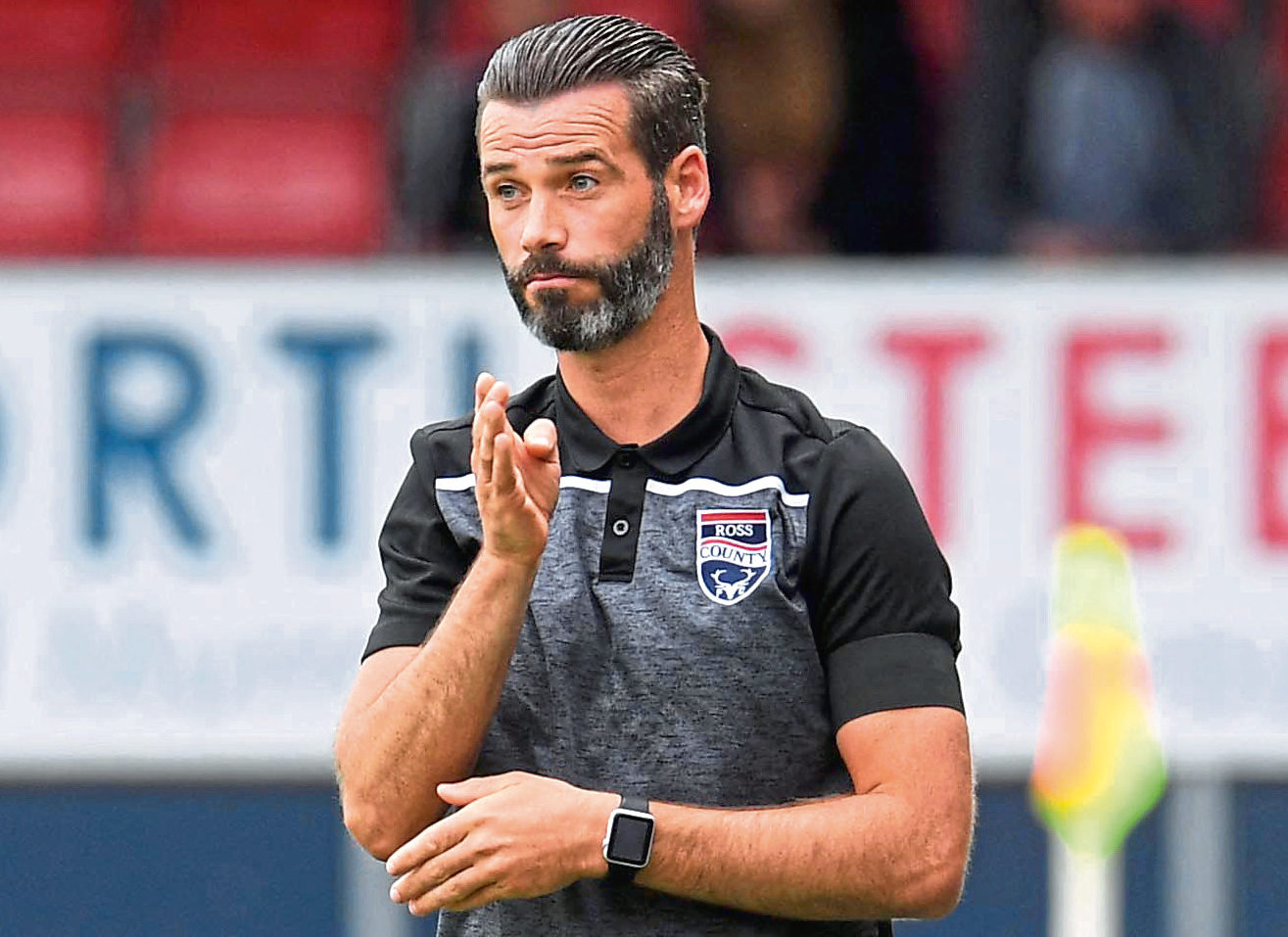Ross County’s defensive struggles on their first season back in the Premiership last term were well-documented.
Over the course of what was a curtailed top-flight campaign of 30 matches due to the coronavirus pandemic, the Staggies conceded 60 goals – 10 more than any other team.
County, now bossed solely by Stuart Kettlewell, after Steven Ferguson moved into the chief executive role at the Global Energy Stadium, had been honest about the need for improvements this term.
Despite scoring more goals than sixth-placed St Johnstone last time around, the Dingwall outfit finished 10th – in a large part due to their leakiness at the back.
Speaking to our Northern Goal podcast in June, now-sole manager Kettlewell said: “The evolution of our team and where we want to go next with it will be to iron some of the goals we lost, which we feel were preventable.
The facts don’t lie – we had the worst defensive record in the division by a decent distance.
“From my point of view, taking on the manager’s role, but whether it was co-manager or sole manager, I know the game of football and understand what our deficiencies were. It’s important we try to address that over the coming season.
“That starts in pre-season and we have to try to rectify that situation.
“If we were to go in thinking we could approach it the exact same way, we’d be naive, because we’d get the same outcome.
“We have to be forward thinking, doing work with players on the pitch to eradicate these issues. You’ve got to trust the players.
“But it’s clear to see we’re a couple of positions short, including across the back, so we’ll be working to address that and recruit the right personnel to fill those slots.”
Meanwhile, just this week following County’s 0-0 home draw with high-flying Hibs, centre-back Callum Morris told the Press and Journal he found the amount of counters conceded last season “embarrassing”.
County are now 11 games into the 2020/21 season, having played each of their rivals once, and it is a good time to see how the numbers compare to last term and how much the Staggies have fulfilled their aim of tightening it up at the back.
How do Ross County’s defensive numbers stack up against last season?
Saturday’s clean sheet against the Hibees was the Staggies’ fourth of the fledgling 2020/21 campaign. They are only behind the top four in this respect.
Not bad at all, when you consider it was December 14 against Kilmarnock last term – 17 games in – by the time County managed a fourth shutout.
This term they’ve managed to keep out Hibs, Motherwell, Hamilton and St Johnstone, winning three of those games.
In their first 11 games of 2019/20, the Staggies conceded 23 goals and were already en route to their eventual average of two goals against-per-game.
So far in season 2020/21, they’ve only conceded 16 times.
When you take away goals conceded against the Premiership’s big hitters – Celtic (0-5), Rangers (0-2) and Aberdeen (0-3) – this season, County’s goals against total is a modest six in eight. Less than a goal a game.
Removing the goals conceded against the Hoops (0-6), Gers (0-4) and Dons (0-3) – teams who operate in a different financial sphere to the Staggies – in the first round of fixtures for 2019/20 still left a more-than-one-goal-a-game-conceded total of 10 goals against in eight outings.
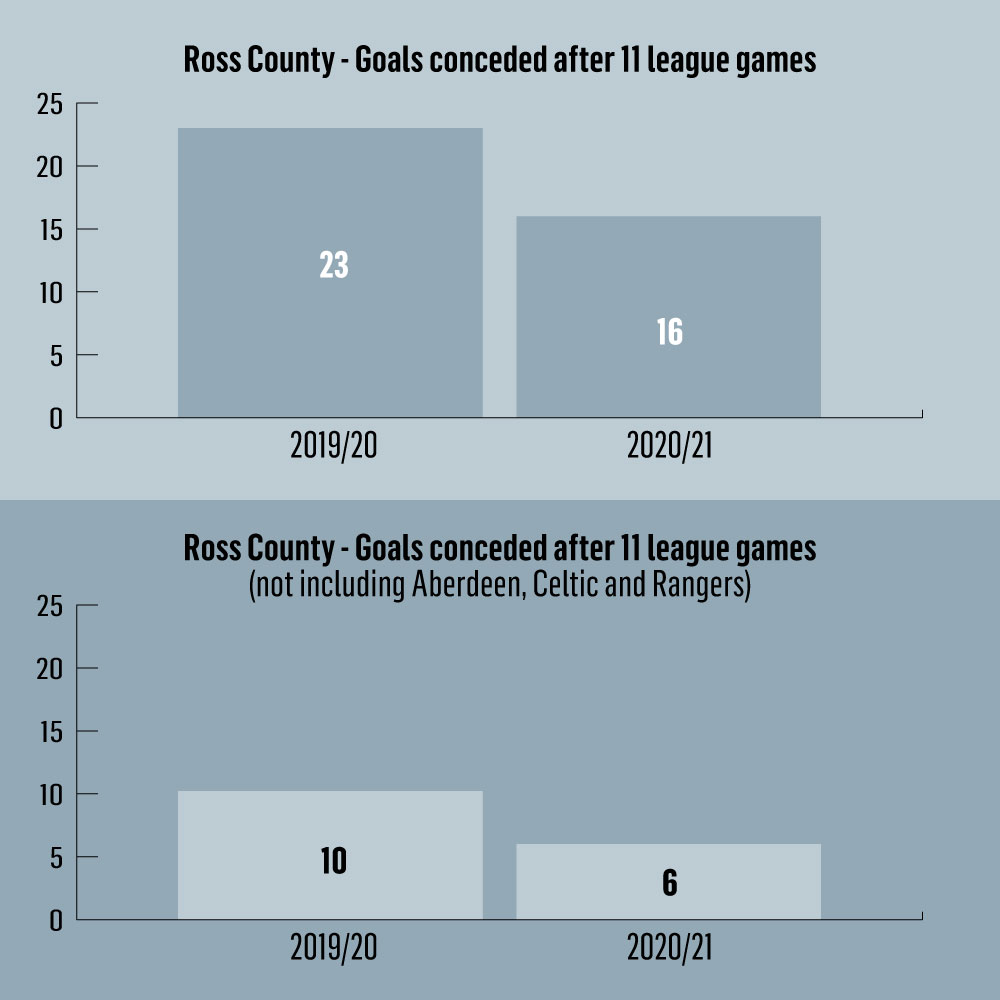
There has clearly been an improvement.
Over the 11 games played this season, County have conceded more than two goals on two occasions. Last season, after 11 matches, they’d done it four times.
What or who has made the difference to Ross County’s defence?
The Staggies will take encouragement from the early indications of defensive improvement shown by a relatively new backline after Kettlewell secured the reinforcements he knew they needed in June.
It was a youthful back four which started the opening five matches, with January addition Coll Donaldson the senior figure at 25.
Summer signings Connor Randall (24) and Alex Iacovitti (23) have also played in the majority of games, while teenager Josh Reid has been an impressive performer at left-back.
Although Randall and Reid have spent time on the sidelines, Donaldson and Iacovitti have provided the framework for the backline, with both having started every game to this point.
The pair have struck up a strong partnership, with Donaldson grasping the step up following a productive spell in the Championship with Caley Thistle, while former Scotland under-21 international Iacovitti has provided a commanding presence and looks a shrewd addition from Oldham Athletic.
Stuart Kettlewell has also seen the merit of experience in his rearguard, with Callum, Keith Watson and Carl Tremarco being called upon at times, including Saturday’s 0-0 draw with Hibernian.
The Staggies deployed a back three for the Hibs game, with Watson drafted in.
Kettlewell will also be boosted by the return of Englishman Tom Grivosti, who made his first appearance in 12 months following a foot injury.
County showed strong resolve in their opening two matches of the Premiership campaign, getting off to a flyer in the clean sheet stakes with successive shut-out victories over Motherwell and Hamilton Accies.
The Staggies subsequently encountered a sticky period in which they took just two points from their next five matches, conceding in all five.
However, a strong defensive display resulted earned another 1-0 victory over St Johnstone on September 19.
Although County, somewhat understandably, came unstuck in defeats to Aberdeen and Rangers, their 2-0 defeat at Ibrox was good in the sense they didn’t cough up a lot of chances, and they, of course, managed to keep fourth-placed Hibs at bay on Saturday.
The Staggies rode their luck at times against Jack Ross’ men, and there have been other elements of good fortune such as Motherwell missing a penalty on the opening day, but it is perhaps a given teams like County are going to also rely on pieces of luck over the course of campaign, as well as organisation and resilience.
But barring heavy defeats against Celtic and the Dons – which have accounted for half of the goals County have conceded – a firmer defensive unit looks to have often been the difference between points being gained or dropped, especially with less goals currently being netted than last term.
County have five less goals than they had after 11 matches in 2019/20.
Ultimately, though, their improved defensive record has left the Staggies in seventh position, exactly the same Premiership slot they found themselves in after 11 rounds of fixtures in 2019/20, however, funnily enough, with one point less than they 13 they had after the same amount of games last term.
